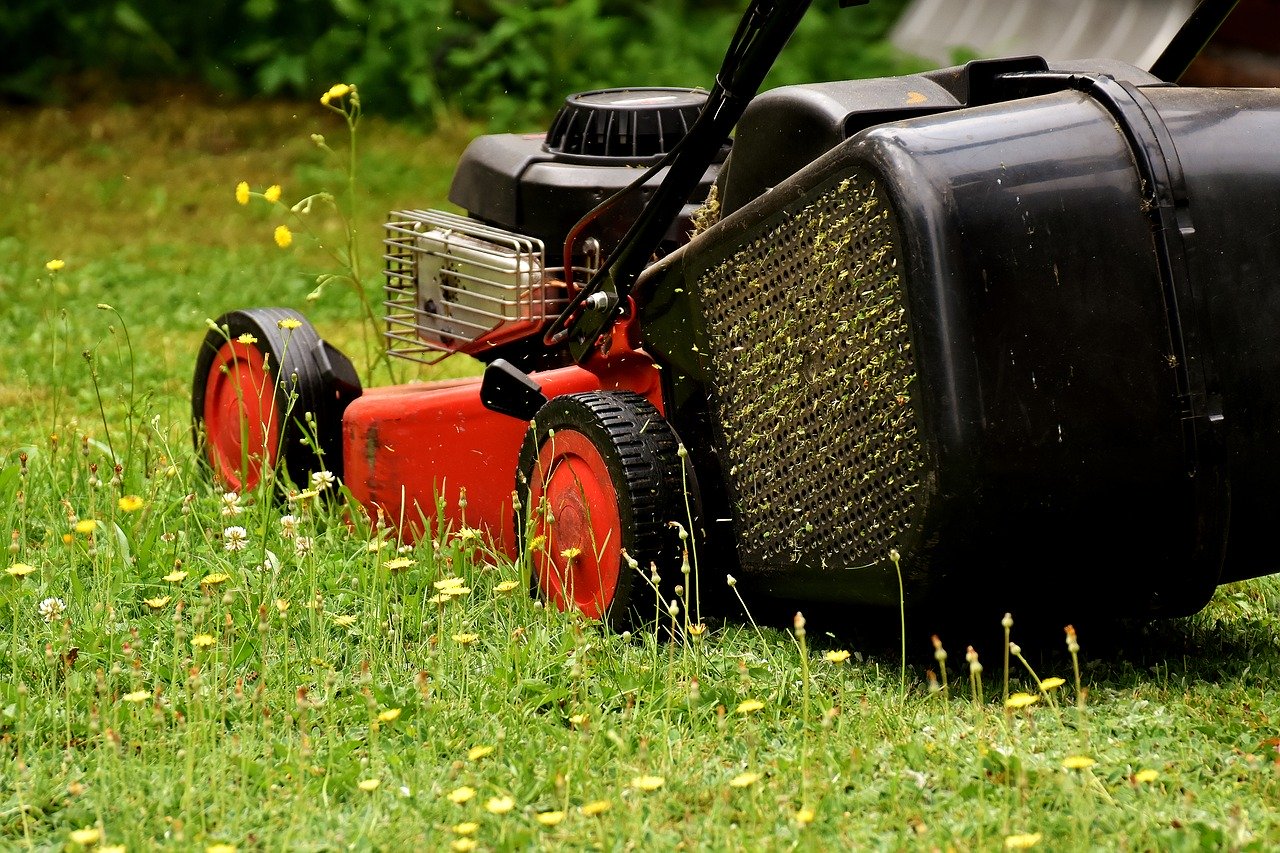The grass type and the height you plan on mowing can make a difference the first time you cut new grass. Then, you have to consider the season and germination period because weather conditions may speed up or slow down blade and root growth. And of course, whether you bought grass seeds or sods.
When to mow new grass? The first lawn cut should not happen before the grass grows at least 2 inches. Usually, between 5 and 6 inches is perfect.
But if you let the blades grow too high, you will miss the opportunity to thicken up the lawn. For clarity, the grass will produce new tillers as long as you do not cut more than one quarter off on the first mow.
When To Mow New Grass After Overseeding

Overseeding forces us to consider when to mow new grass from another perspective. That is, from its root development.
Not only overseeded areas have younger roots, but they are also more prone to soil disturbance when you use heavy machinery. The lighter the lawnmower, the less of a chance that you cause damage as you turn and change direction.
As a rule of thumb, avoiding tight turns is the best way to cut overseeded areas with a rotary mower. Greenkeepers should also ride their zero-turn mowers about 24 hours after the last watering to allow the ground to dry up a little bit but keep the new roots moist.
No one should mow wet areas. And this applies to overseeded areas too. So, it is better to wait a couple of hours under full sun or get back at them when the ground gets dry.
If you overseed again to fill the bare spots, adjust your watering. You should water the new seeds lightly and frequently to keep them from drying. But once they have germinated, you had better change the watering schedule. In this way, you will not have to wait for the soil to dry when mowing the rest of the lawn.
Maintaining A Certain Height
You are not bound to keep your grass at the previously mentioned height. Then again, you might decide to change the grass height because it does not adapt to the heat.
Maybe you want to raise it up in the summer and come down in the fall. This option is all right, too. In all these cases, you only have to change the approach.
Here is what you might want to do if you see the blades flopping over because they cannot withstand getting too tall.
Once you decide on the desired height, make sure the grass is at least 1 inch taller than your desired height for the first mow. Then, cut it with a manual reel mower or a rotary one without the striping kit.
The main goal is not to have anything rolling over the new grass when mowing it for the first time. Why? Because the grass root system has not developed fully yet.
Side discharge or bagging works well to train the new grass and avoid clumping issues. But above all, give the new grass time to mature, and do not expect it to be perfect after the first lawn cut. Training the blades to grow at a new height can require a couple of mows.
5 Tips For A Perfect First Lawn Cut
- Aerate high-traffic areas after the first mow. Generally, using a pitchfork to punch holes and wiggle the earth beneath the root is ok. But if you have a mechanical aerator, use small solid tines. You do not need to use a plug aerator unless you spotted water pooling in the days beforehand.
- Before planning to mow the lawn, measure the grass with a ruler. Above all, make sure most blade tips are between 5 and 6 inches by sampling different areas of your lawn. If you find different heights, consider cutting only the taller areas. So they are level with the rest of the turf.
- Clean and sharpen the blades of your lawnmower before the first mow. Better yet, only cut a small section and measure the grass height again to make sure you did not cut too low before mowing the rest of the lawn.
- Clear any debris off the lawn with a leaf blower or a rake before starting your lawnmower.
- Wait for a warm, dry day and make sure no frost dates are ahead. And if the weather is too dry, water the grass immediately after mowing.
Related Article: Should You Cut Grass Shorter in the Fall?
